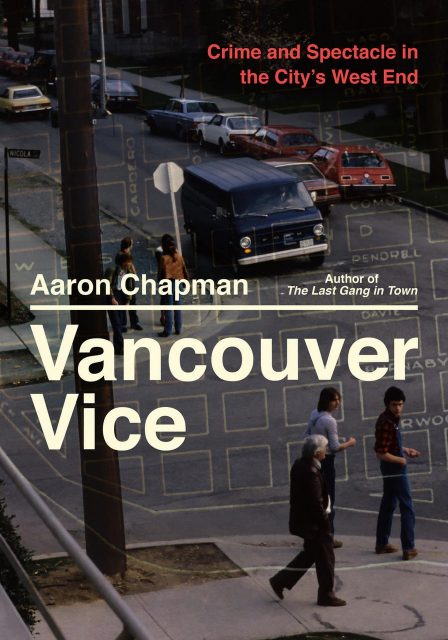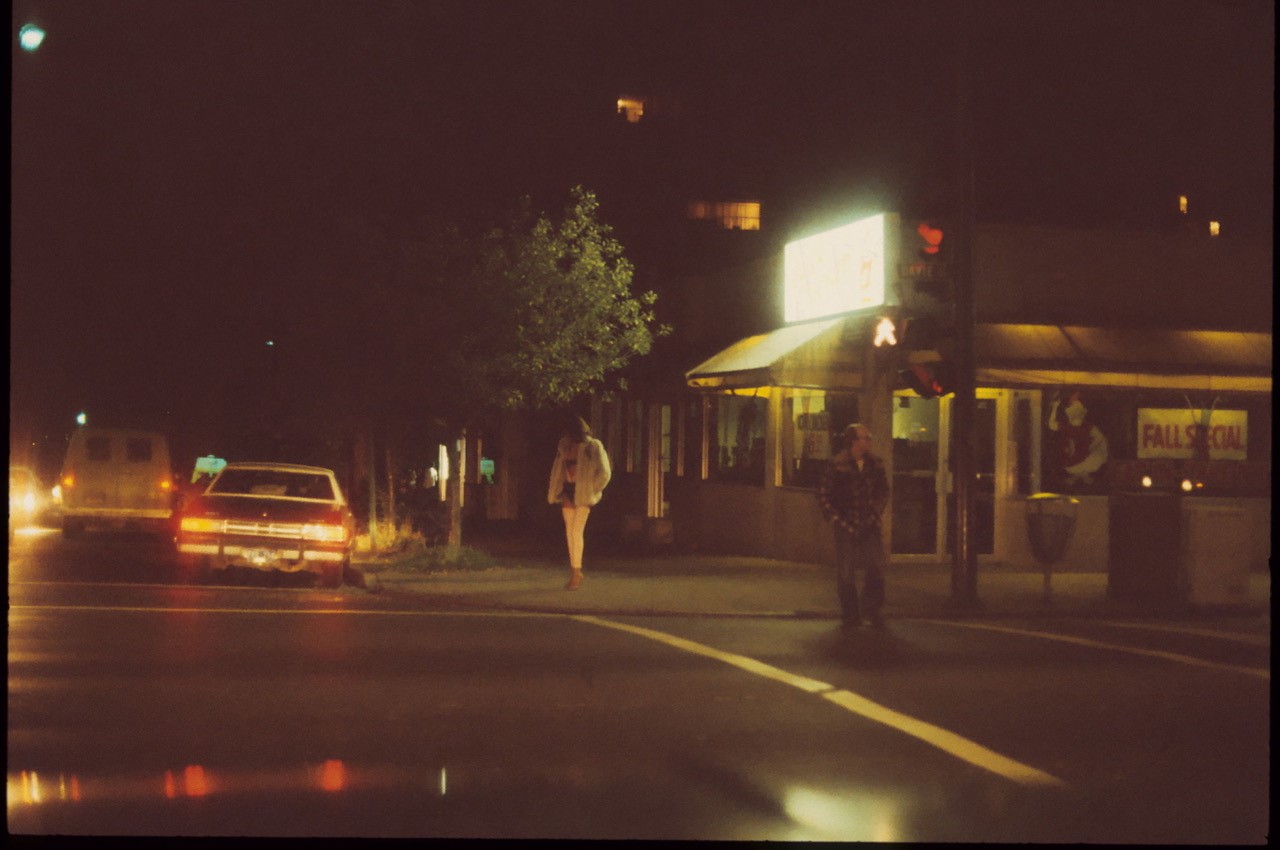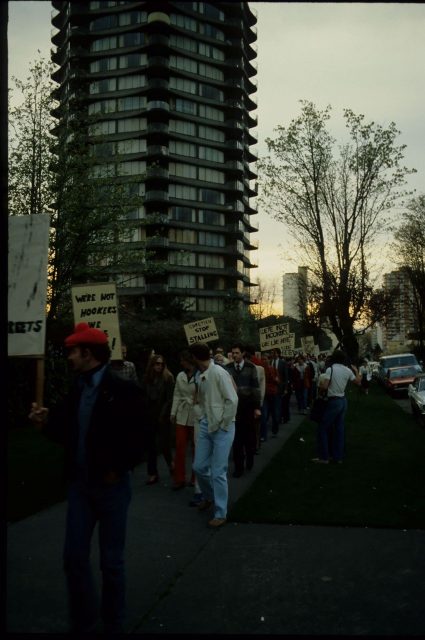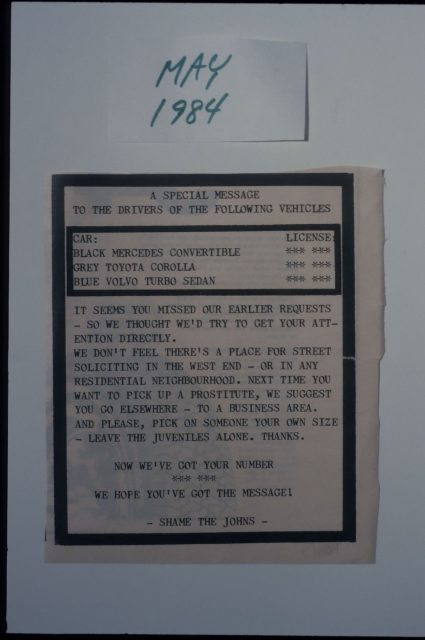If you lived in Vancouver’s West End after 1981 you may not know that street barricades and parklets are a leftover from the West End’s prostitution era
 West End:
West End:
Aaron Chapman’s latest book Vancouver Vice, is a colourful history of the West End in the 1970s and ‘80s. In those days up to 300 sex workers—male and female—strolled the streets—40 to 50 of whom might be working on any given day or night. As Aaron says, the only evidence that this open-air brothel existed is a memorial dedicated to sex workers on Jervis Street and the barricades that created those charming cul-de-sacs and parklets.
“The barricades were first proposed to calm traffic in 1973,” says Aaron. “But when they were eventually installed in 1981, the City of Vancouver was so desperate to look like they were doing something about the sex worker issue in the West End that their purpose was renamed.” The idea was that barricades would discourage motorists from driving up and down residential streets in search of sex.

Prostitution:
Up until the 1970s, prostitution was mostly tucked away behind closed apartment and rooming house doors, and later nightclubs and hotel lounges. A couple of high-profile cases managed to push sex workers out onto Davie Street. “Then people are upset that there is prostitution on Davie Street, so it goes to the residential streets and the people get upset who live there,” says Aaron. Increased patrols and a greater uniformed police presence in the West End had mixed results.

“It seems like everything that the VPD tried to do to curb street prostitution had the worst unintended effect, including the street barricades,” he says. “The street barricades don’t really work because they just slow traffic down and that allows the sex workers more time to negotiate a price with their clients.”
On November 16, 1981, City of Vancouver workers began installing $28,000 worth of temporary barriers. These were little more than chain link fences made permanent the following year.

Residents upset:
At the time, says Aaron, this upset residents who couldn’t park outside their apartment buildings. Even local Fire Hall #6 worried about longer response times and complained about the barricades. “If you proposed removing those barricades today and opening the streets back up to traffic, you’d have the same amount of people saying they don’t want cars going down their streets and parking in front of their buildings,” says Aaron.

Related:
© Eve Lazarus, 2022

